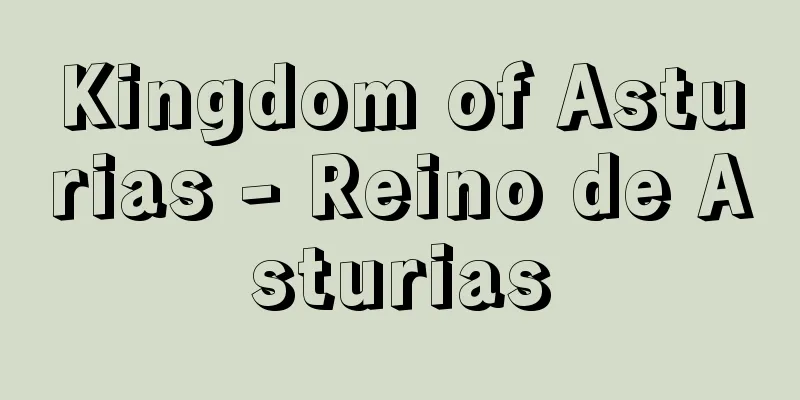Kingdom of Asturias - Reino de Asturias

|
A kingdom that existed in the northwest of the Iberian Peninsula from the early 8th century to the early 10th century. Its name remains in the region today. In 711, the Visigothic Kingdom of Iberia collapsed due to an invasion by Muslims. Some of the former powers fled to the mountainous region on the northern edge of the peninsula, where they merged with the indigenous people and eventually formed Christian societies in various places that advocated anti-Islam. The pioneer of this was the Kingdom of Asturias, whose founding date is usually considered to be 718, when the Visigothic nobleman Pelagio was elected king. The Kingdom of Asturias was initially a very weak country in terms of population, economy, military, and culture. However, taking advantage of the internal conflicts and carelessness in Al-Andalus (Islamic Spain), it expanded its territory relatively quickly, strengthened its regime, and at the same time succeeded in establishing its own church organization, which was essential for the survival of the country at the time. Its kingship claimed to be the legitimate successor to the Visigothic monarchy from an early stage, and its anti-Islamic struggle was a battle to restore the Visigothic Kingdom. In the early 10th century, with the population growing and the country's power strengthening, the capital was moved from Oviedo in the mountains to Leon in the plains, and it continued to develop as the Kingdom of Leon. Incidentally, the title of the Spanish Crown Prince is príncipe de Asturias, which was created in 1388 to emulate the English Prince of Wales. [Kobayashi Kazuhiro] [References] | | | |Source: Shogakukan Encyclopedia Nipponica About Encyclopedia Nipponica Information | Legend |
|
8世紀初めから10世紀初めにかけて、イベリア半島北西部にあった王国。その名は同地域の名称として現在も残る。711年、イベリアの西ゴート王国はイスラム教徒の侵攻によって崩壊した。旧勢力の一部は半島北辺の山岳部に逃れ、ここで先住民と融合、やがて各地に反イスラムを標榜(ひょうぼう)するキリスト教徒社会を形成した。これの先駆例がアストゥリアス王国で、通常西ゴート貴族ペラージョが国王に選ばれた718年を成立年とする。アストゥリアス王国は、当初、人口、経済、軍事、文化のいずれにおいてもまったくの弱小国であった。しかし、アル・アンダルス(イスラム教スペイン)の内紛と油断に乗じて比較的速やかに領土を拡大し、体制を強化すると同時に当時、国の存立に不可欠な独自の教会組織の確立に成功した。その王権は早くから西ゴート王権の正統な後継者を自任し、自分たちの反イスラム闘争を西ゴート王国復興を目ざす戦いとした。10世紀初頭、人口の増加と国力の充実を背景に首都を山間部のオビエドから平野部のレオンに移し、以後レオン王国として発展を続けた。ちなみに、スペイン皇太子の称号はpríncipe de Asturiasというが、これはイギリス皇太子のprince of Walesに倣って1388年に設けられた。 [小林一宏] [参照項目] | | | |出典 小学館 日本大百科全書(ニッポニカ)日本大百科全書(ニッポニカ)について 情報 | 凡例 |
Recommend
Ooyama azalea - Ooyama azalea
...Mountain azaleas have medium-sized or small fl...
Artyom (English spelling) Артём/Artyom
A city in Primorsky Krai, eastern Russia. It is l...
Aluminum chloride
A compound of aluminum and chlorine. An anhydrate...
Kitahara Senroku
1887-1951 A metal engraver from the Taisho to Sho...
Iwa Kusuma Sumantri
1899‐1971 Indonesian politician. Born to an aristo...
Malik Shah
1055‐92 The third Sultan of the Seljuk Empire. Rei...
Bankruptcy - Dad (English spelling) bankruptcy
When a company hits a deadlock in management and ...
Yuan Kang
…15 volumes. Written by Yuan Kang of the Later Ha...
Kyosai Wakabayashi
Year of death: January 20, 1732 (February 15, 1732...
Oonori - Oonori
The name of a rhythmic style in Noh. It is opposed...
Radioactive element - hoshaseigenso (English spelling) radioactive element
It refers to an element that has radioactivity, b...
Musical film
A genre of film in which the story unfolds mainly...
Kurashi no Techo - Living Tips
Founded in 1948, this is a general lifestyle magaz...
Stable framework - Anti-Bone Group
...(5) Composite frame A frame that has both pin ...
Eyerest Green - Eyerest Green
...After investigation, it was found that the blu...









